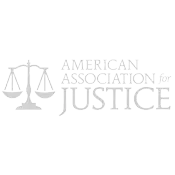What Do You Need to Prove a Slip and Fall Claim?
When someone slips and falls in a store, a public space, or someone else’s property, it is not automatically cause for a slip and fall claim. Whether the injured party wants to pursue an insurance settlement, or is interested in a personal injury lawsuit, there are key questions that must be answered regarding fault and liability – and evidence that must be gathered as proof.
When an injury accident is the result of something or someone outside of your control, you often have legal recourse to obtain compensation for injuries and other expenses. The principal issue determining whether or not you have a case is that of liability. In short, in Slip and Fall (premises liability) cases, you must have proof that the property owner – or entity responsible for managing the property – is liable for your injuries due to negligence or intentional wrongdoing that caused (or failed to prevent) the accident and injuries.
To prove negligence, you will need many kinds of evidence – the more the better. Types of evidence that may help you prove your case are:
• Photographs of the scene: If you have a smartphone at the time of your slip and fall accident, you should take pictures of the specific cause of your fall (such as the puddle of liquid on the floor), as well as your surroundings. Include evidence of poor lighting, missing railings or signage, crowded aisles, and maintenance tools (such as a mop or towels near a leak). Such photos will back up your claims that 1) there was a hazardous condition, 2) the property owner was or should have been aware of it, and 3) there was inadequate warning regarding the hazard.
• Evidence of your injuries: Photographs may also help to document your injuries, but medical reports from EMTs, ER visits, or follow-up physician appointments are even more vital. Many slip and fall accident attorneys have access to medical professionals who can attest to the fact that the injuries recorded could or did result from the type of fall you experienced.
• Witness statements, accident reports, and security video if possible: If anyone was around to witness your accident, you should get their contact information and a statement from them, explaining what they saw and what they noticed about the hazardous conditions in question. If possible, get statements regarding how long the hazard was there or the property owner’s prior knowledge of it from employees or other customers. You should also request copies of any official accident/incident reports drawn up by employees on the premises, as well as copies of security footage that may have captured the incident. You should try to request these pieces of evidence as soon as possible, before anything is misplaced, altered, forgotten or deleted.
In addition to proving liability, you must be able to prove your losses in order to recover damages in a slip and fall case. You should retain all medical bills, receipts, and bank statements showing payments for medical expenses. If you are seeking damages for pain and suffering, long-term disability, and so on, you will also need such proof as witnesses to your suffering, physicians’ notes, and statements from your employers regarding lost wages or your inability to perform your job due to your injuries.
In order to gather enough pertinent evidence, you may want to speak with a personal injury lawyer as soon as possible following your slip and fall accident. An injury attorney can help you better understand what you need and how to get it, and can greatly improve your odds of winning the compensation you deserve.





